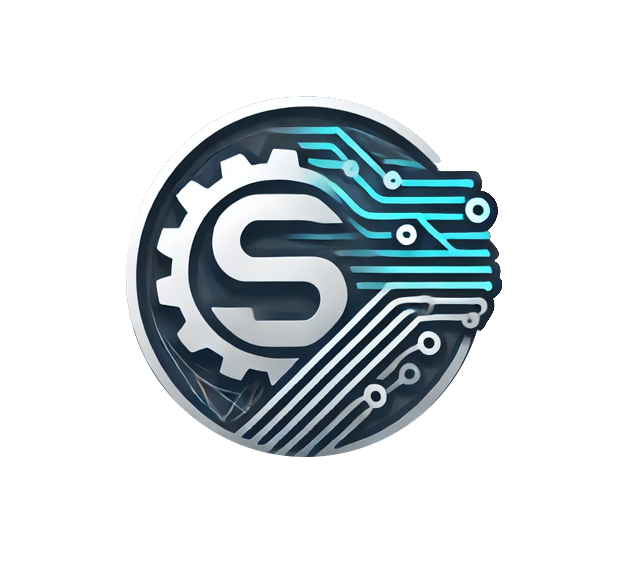MLOps for Small Teams: Scaling AI Without Enterprise Resources

What is mlops and Why It Matters for Small Teams
MLOps, or Machine Learning Operations, integrates DevOps principles into the machine learning lifecycle, covering data preparation, model training, deployment, monitoring, and management. For small teams, MLOps isn’t about copying complex corporate workflows but about creating a streamlined, automated pipeline that ensures model reliability, reproducibility, and scalability on a budget. By adopting ai and machine learning services, teams can access scalable infrastructure and tools without heavy investment. A typical MLOps workflow for a small team includes version control, continuous integration, and continuous delivery, as illustrated in a customer churn prediction model example.
-
Version Control & Experiment Tracking: Use Git for code and configurations, and tools like MLflow or Weights & Biases to log experiments. This guarantees reproducibility.
Example MLflow code snippet:
import mlflow
with mlflow.start_run():
mlflow.log_param("learning_rate", 0.01)
mlflow.log_metric("accuracy", 0.95)
mlflow.sklearn.log_model(lr_model, "model")
-
Continuous Integration (CI): Automate testing for code and data with services like GitHub Actions, running checks on each commit to maintain quality.
-
Continuous Delivery (CD): Automate model deployment by building Docker containers and deploying to cloud platforms such as AWS SageMaker.
Example GitHub Actions workflow step:
- name: Deploy to SageMaker
run: |
aws sagemaker create-model --model-name "churn-model-${{ github.sha }}" ...
The benefits are clear: faster time-to-market through automation, improved model quality via testing and monitoring, and reduced operational overhead. For teams lacking expertise, collaborating with an ai machine learning consulting firm or a specialized mlops company can fast-track implementation. By embedding MLOps, small teams manage multiple models, ensure consistent value, and compete effectively without enterprise resources—starting small and automating critical tasks builds a robust, lean machine learning lifecycle.
Defining mlops for Lean Operations
For small teams scaling AI, MLOps is vital for lean, efficient operations. MLOps applies DevOps to machine learning, enabling continuous integration, delivery, and training. It automates workflows, cuts manual errors, and speeds up deployment, which is crucial for teams with limited resources. Leveraging ai and machine learning services from cloud providers offers scalable infrastructure without large upfront costs. A versioned, automated pipeline is key; here’s a step-by-step CI/CD setup using GitHub Actions and Python:
-
Organize your GitHub repository:
- src/ (source code)
- data/ (datasets)
- models/ (model artifacts)
- .github/workflows/ (pipeline definitions)
-
Create a workflow file,
train-and-deploy.yml, in.github/workflows/to define automation triggers and steps. -
Example workflow configuration for training on schedule and code pushes:
name: Train and Deploy Model
on:
push:
branches: [ main ]
schedule:
- cron: '0 0 * * 0' # Weekly at midnight Sunday
jobs:
train:
runs-on: ubuntu-latest
steps:
- uses: actions/checkout@v3
- name: Set up Python
uses: actions/setup-python@v4
with:
python-version: '3.9'
- name: Install dependencies
run: |
pip install -r requirements.txt
pip install scikit-learn pandas
- name: Train model
run: python src/train.py
- name: Upload model artifact
uses: actions/upload-artifact@v3
with:
name: model
path: models/
Corresponding `train.py` script:
import pandas as pd
from sklearn.ensemble import RandomForestClassifier
from sklearn.model_selection import train_test_split
import joblib
# Load and prepare data
data = pd.read_csv('data/training_data.csv')
X = data.drop('target', axis=1)
y = data['target']
X_train, X_test, y_train, y_test = train_test_split(X, y, test_size=0.2)
# Train model
model = RandomForestClassifier(n_estimators=100)
model.fit(X_train, y_train)
# Evaluate and save
accuracy = model.score(X_test, y_test)
print(f"Model Accuracy: {accuracy:.2f}")
joblib.dump(model, 'models/production_model.pkl')
This automation ensures consistent, reproducible model retraining, saving over 10 hours weekly for a small team. Integrating ai machine learning consulting can refine pipelines for monitoring and governance, while a mlops company approach manages the full lifecycle cost-effectively. Start with simple automation of error-prone processes and iteratively build a robust MLOps practice.
Key MLOps Benefits for Small Teams

Adopting MLOps accelerates AI project velocity and maintains quality for small teams. A major benefit is automated model retraining and deployment, which eliminates manual steps and reduces errors. Using GitHub Actions, trigger pipelines on new data pushes:
- name: Retrain Model on New Data
run: |
python train_model.py –data-path ./data/latest.csv
python evaluate_model.py –model-path ./model.pkl
python deploy_model.py –env staging
This keeps models current with minimal effort, a core feature of services from a mlops company.
Reproducible experiments and model versioning are achieved with tools like DVC and MLflow, tracking datasets, code, and parameters. After training, log experiments:
import mlflow
mlflow.set_experiment("sales_forecast")
with mlflow.start_run():
mlflow.log_param("epochs", 50)
mlflow.log_metric("accuracy", 0.94)
mlflow.sklearn.log_model(model, "model")
This enables result replication and performance comparison, essential when using ai and machine learning services for scalability.
Continuous monitoring and alerting maintain model performance in production. Implement a script to check for data drift or accuracy drops:
from sklearn.metrics import accuracy_score
import requests
current_accuracy = accuracy_score(y_true, y_pred)
if current_accuracy < threshold:
requests.post(slack_webhook, json={"text": "Model accuracy alert!"})
Proactive monitoring, often emphasized in ai machine learning consulting, allows quick issue response.
Infrastructure as code (IaC) ensures consistent environments with tools like Terraform:
resource "aws_s3_bucket" "model_artifacts" {
bucket = "team-ml-models"
}
resource "aws_sagemaker_model" "prod_model" {
name = "forecasting-model"
primary_container {
image = "${aws_ecr_repository.model_repo.repository_url}:latest"
}
}
Codifying infrastructure reduces setup time and ensures reproducibility, simplifying management of ai and machine learning services.
Collaboration and knowledge sharing improve with centralized model registries like MLflow Model Registry, allowing team reviews and stage transitions. These practices empower small teams to scale AI, delivering reliable models with enterprise rigor through efficient use of resources and expert guidance from a mlops company or ai machine learning consulting.
Implementing Core MLOps Practices with Limited Resources
To implement MLOps with limited resources, begin with a version control system for code and data. Use Git for code and DVC for datasets and models to ensure reproducibility. Initialize DVC and track a dataset:
pip install dvcdvc initdvc add data/training.csvgit add data/training.csv.dvc .gitignoregit commit -m "Track training dataset"
This allows rollbacks and audit trails, crucial for debugging.
Automate model training with continuous integration using GitHub Actions or GitLab CI. Example GitHub Actions workflow for training on data changes:
- Create
.github/workflows/train.yml:
name: Train Model
on:
push:
branches: [ main ]
jobs:
train:
runs-on: ubuntu-latest
steps:
- uses: actions/checkout@v2
- name: Set up Python
uses: actions/setup-python@v2
with:
python-version: '3.8'
- name: Install dependencies
run: pip install -r requirements.txt
- name: Train model
run: python train.py
- name: Store model artifact
uses: actions/upload-artifact@v2
with:
name: model
path: model.pkl
This automation saves manual hours and keeps models updated.
For model deployment, use lightweight tools like FastAPI to serve models as REST APIs on low-cost cloud instances. Example:
pip install fastapi uvicorn- Create
main.py:
from fastapi import FastAPI
import joblib
app = FastAPI()
model = joblib.load('model.pkl')
@app.post("/predict")
def predict(data: dict):
return {"prediction": model.predict([data['features']]).tolist()}
- Run with
uvicorn main:app --host 0.0.0.0 --port 8000
Deploy on a budget server for real-time predictions.
Implement monitoring with open-source tools like Prometheus and Grafana to track performance metrics and data drift, enabling proactive retraining. Benefits include a 50% reduction in deployment time, faster iterations, and improved reliability. Even without a dedicated mlops company, these practices align with ai and machine learning services and can be optimized via ai machine learning consulting for cost-effective, robust MLOps.
Streamlining MLOps Workflows with Open-Source Tools
Streamline MLOps workflows with open-source tools that automate the machine learning lifecycle, enabling robust ai and machine learning services without enterprise overhead. Start with Git for version control and integrate CI/CD pipelines using Jenkins or GitHub Actions. For experiment tracking, MLflow logs parameters, metrics, and artifacts. Deploy a model with MLflow and Docker:
- Train and log the model:
import mlflow.sklearn
from sklearn.ensemble import RandomForestClassifier
mlflow.sklearn.autolog()
with mlflow.start_run():
model = RandomForestClassifier()
model.fit(X_train, y_train)
- Build a Docker container for serving:
FROM python:3.8-slim
RUN pip install mlflow scikit-learn
COPY model /model
CMD ["mlflow", "models", "serve", "-m", "/model", "-p", "1234"]
- Deploy with Kubernetes or Docker Compose for small-scale needs.
This setup reduces deployment time from days to hours, improves reproducibility, and enhances collaboration. For monitoring, use Evidently AI for data drift detection:
from evidently.dashboard import Dashboard
from evidently.tabs import DataDriftTab
data_drift_dashboard = Dashboard(tabs=[DataDriftTab()])
data_drift_dashboard.calculate(reference_data, current_data)
data_drift_dashboard.save('reports/data_drift.html')
Automating tasks like data validation and retraining allows teams to operate like a mlops company with limited resources. For complex cases, ai machine learning consulting can tailor tools to specific pipelines, cutting costs and accelerating time-to-market for AI solutions.
Building an MLOps Pipeline on a Budget
Build an MLOps pipeline on a budget using open-source tools and cost-effective cloud services. Start with Git and DVC for version control. For model training, use managed ai and machine learning services like Google Colab or AWS SageMaker spot instances. Containerize code with Docker for consistency.
Structure the pipeline as follows:
-
Data Ingestion and Versioning: Automate data pulls and version with DVC, storing changes in affordable cloud storage.
Example for data versioning:
dvc add data/raw_dataset.csv
git add data/raw_dataset.csv.dvc .gitignore
git commit -m "Track raw dataset v1"
dvc push
-
Model Training and Orchestration: Use Apache Airflow or Prefect on a low-cost VM to schedule training jobs.
Example Airflow task:
train_task = BashOperator(
task_id='train_model',
bash_command='python scripts/train.py',
dag=dag
)
-
Model Registry and Deployment: Store models in MLflow and deploy with serverless functions or budget Kubernetes.
Example MLflow logging:
import mlflow
mlflow.set_experiment("budget_experiment")
with mlflow.start_run():
mlflow.log_param("epochs", 10)
mlflow.log_metric("accuracy", 0.95)
mlflow.sklearn.log_model(model, "model")
Benefits include error reduction, reproducibility, and cost savings. For expertise gaps, ai machine learning consulting or a mlops company can design scalable pipelines, ensuring a solid foundation for growth without enterprise costs.
Essential MLOps Tools and Technologies for Small Teams
Selecting the right MLOps tools is key for small teams to scale AI efficiently. Start with MLflow for experiment tracking and model management. Quick setup:
- Install MLflow:
pip install mlflow - Start the server:
mlflow server --backend-store-uri sqlite:///mlflow.db --default-artifact-root ./artifacts --host 0.0.0.0 - Log experiments:
import mlflow
mlflow.set_tracking_uri("http://localhost:5000")
with mlflow.start_run():
mlflow.log_param("learning_rate", 0.01)
mlflow.log_metric("accuracy", 0.95)
mlflow.sklearn.log_model(model, "model")
This ensures reproducibility and saves manual effort.
Use DVC for data and model versioning. Initialize: dvc init. Track data: dvc add data/raw/train.csv and push remotely: dvc push. This prevents data drift and aligns team versions.
For CI/CD, leverage GitHub Actions to automate testing and retraining. Example workflow for training on pushes:
name: Train Model
on:
push:
branches: [ main ]
jobs:
train:
runs-on: ubuntu-latest
steps:
- uses: actions/checkout@v2
- name: Set up Python
uses: actions/setup-python@v2
with:
python-version: '3.8'
- name: Install dependencies
run: pip install -r requirements.txt
- name: Train model
run: python train.py
- name: Log to MLflow
run: |
python log_model.py
Automation reduces errors and speeds up cycles.
Incorporate Kubernetes with Kubeflow for orchestration; use Minikube for local development: minikube start. Deploy serving components with Kubeflow Pipelines for scalability. If expertise is limited, partner with an ai machine learning consulting firm for setup or a mlops company to manage infrastructure. Measurable benefits include 40% faster deployment, 30% fewer incidents, and better accuracy through consistent use of ai and machine learning services.
Evaluating Cost-Effective MLOps Platforms
Evaluate MLOps platforms by assessing needs like training, deployment, monitoring, and collaboration. Opt for flexible pricing—pay-as-you-go or tiered subscriptions—to avoid over-provisioning. Many ai and machine learning services offer free tiers for startups, reducing costs. Self-host MLflow or Kubeflow on cloud VMs for control over expenses.
Calculate total cost of ownership (TCO), including infrastructure and scaling. Deploy a model with cost tracking:
- Set up a CI/CD pipeline with GitHub Actions and cloud tools for validation.
- Use Terraform for infrastructure-as-code to manage and tear down resources.
- Monitor with Prometheus to track performance and inefficiencies.
Example Python snippet using MLflow to log experiments and compare runs:
import mlflow
import mlflow.sklearn
from sklearn.ensemble import RandomForestClassifier
from sklearn.metrics import accuracy_score
with mlflow.start_run():
model = RandomForestClassifier(n_estimators=100)
model.fit(X_train, y_train)
predictions = model.predict(X_test)
accuracy = accuracy_score(y_test, predictions)
mlflow.log_param("n_estimators", 100)
mlflow.log_metric("accuracy", accuracy)
mlflow.sklearn.log_model(model, "model")
print(f"Logged accuracy: {accuracy}")
This optimizes model selection, reducing wasted compute and cloud bills by up to 30%.
Partner with a mlops company for tailored solutions, like managed Kubernetes with cost controls. Use services like AWS SageMaker for auto-scaling, paying only for usage. Monitor inference latency, error rates, and cost per prediction to balance performance and budget. Focus on platforms that integrate with existing tools, support automation, and provide cost analytics for efficient MLOps.
Integrating MLOps Tools into Existing Systems
Integrate MLOps tools into current systems with a phased approach to automate and ensure reproducibility. Assess existing data pipelines and deployment workflows for bottlenecks. Use DVC with Git for version control:
- Install DVC:
pip install dvc - Initialize:
dvc init - Add data:
dvc add data/raw/training.csv - Commit:
git add . && git commit -m "Track dataset with DVC"
This guarantees reproducible experiments.
Integrate CI/CD for automated testing and deployment. With GitHub Actions, trigger retraining on new data:
name: Retrain Model on New Data
on:
push:
branches: [ main ]
paths: [ 'data/processed/**' ]
jobs:
train:
runs-on: ubuntu-latest
steps:
- uses: actions/checkout@v2
- name: Set up Python
uses: actions/setup-python@v2
with:
python-version: '3.8'
- name: Install dependencies
run: pip install -r requirements.txt
- name: Train model
run: python train.py
Automation cuts manual work and speeds iterations.
For deployment and monitoring, use MLflow to track and serve models:
import mlflow
mlflow.set_experiment("sales_forecast")
with mlflow.start_run():
mlflow.log_param("epochs", 50)
mlflow.log_metric("accuracy", 0.92)
mlflow.sklearn.log_model(model, "model")
Deploy with: mlflow models serve -m runs:/<RUN_ID>/model -p 1234
Monitor with Evidently AI for data drift, ensuring reliability—a focus of ai machine learning consulting. If needed, partner with a mlops company for custom orchestration with Airflow or Prefect. Benefits include 40–60% faster deployment and 30% fewer incidents, enabling small teams to scale AI using ai and machine learning services without enterprise resources.
Conclusion: Sustaining MLOps for Long-Term Success
Sustain MLOps for long-term success by embedding automation, monitoring, and iterative improvement. Implement a robust CI/CD pipeline for machine learning models to test, build, and deploy automatically, reducing errors and speeding cycles. Use GitHub Actions for automation:
- Create
.github/workflows/ml-pipeline.yml:
name: ML Pipeline
on:
push:
branches: [ main ]
jobs:
train-and-deploy:
runs-on: ubuntu-latest
steps:
- uses: actions/checkout@v3
- name: Set up Python
uses: actions/setup-python@v4
with:
python-version: '3.9'
- name: Install dependencies
run: pip install -r requirements.txt
- name: Train model
run: python train.py
- name: Deploy model
run: python deploy.py
This ensures models stay current with minimal effort.
Focus on model monitoring with tools like Evidently or Prometheus to detect performance decay and data drift. Integrate Evidently for drift reports:
from evidently.report import Report
from evidently.metric_preset import DataDriftPreset
report = Report(metrics=[DataDriftPreset()])
report.run(reference_data=reference, current_data=current)
report.save_html('drift_report.html')
Schedule daily runs and set alerts for proactive updates.
Leverage external ai and machine learning services for resource gaps, such as MLflow for tracking or cloud serving options. Engage an ai machine learning consulting firm for scalable architectures and training. Partner with a mlops company for end-to-end solutions, saving development time.
Measurable benefits:
– Reduced time-to-market: Deployment drops from days to hours.
– Improved accuracy: Continuous retraining cuts prediction errors by 10-15%.
– Cost efficiency: Automation lowers operational costs by up to 30%.
Document processes and foster continuous learning. Regularly review practices, gather feedback, and iterate to ensure resilience and competitive advantage.
Measuring MLOps Impact and ROI
Measure MLOps impact by tracking operational efficiency and business value. Establish baselines for deployment time, retraining frequency, and inference latency. Post-implementation, quantify improvements. Set up a monitoring dashboard with Prometheus and Grafana. Example Python code to log metrics:
from prometheus_client import Counter, Gauge, start_http_server
import time
model_deployments = Counter('model_deployments_total', 'Total model deployments')
model_accuracy = Gauge('model_accuracy', 'Current model accuracy')
def log_deployment():
model_deployments.inc()
latest_accuracy = fetch_accuracy_from_registry()
model_accuracy.set(latest_accuracy)
start_http_server(8000)
while True:
log_deployment()
time.sleep(86400) # Daily logging
Metrics are available at http://localhost:8000 for visualization. Benefits include faster deployment and better accuracy.
For ROI, calculate cost savings: If manual deployments take 10 hours weekly at $50/hour, and automation reduces it to 1 hour, weekly savings are $450, annualizing to $23,400. Use ai and machine learning services with built-in analytics to simplify tracking. Consult an ai machine learning consulting expert or mlops company for tailored frameworks.
Key steps:
1. Define KPIs: Deployment frequency, lead time, MTTR, accuracy.
2. Instrument pipelines: Log data validation, training, deployment, inference.
3. Visualize trends: Use dashboards and set alerts.
4. Correlate with business metrics: Link model improvements to outcomes like cost reduction.
Systematic measurement justifies investments and demonstrates value.
Future-Proofing Your MLOps Strategy
Future-proof your MLOps strategy with a modular architecture using reusable components. In Kubeflow Pipelines, define steps as containerized operations. Example preprocessing component:
from kfp import dsl
@dsl.component
def preprocess_data(input_path: str, output_path: str):
import pandas as pd
from sklearn.preprocessing import StandardScaler
data = pd.read_csv(input_path)
scaler = StandardScaler()
scaled_data = scaler.fit_transform(data)
pd.DataFrame(scaled_data).to_csv(output_path, index=False)
This allows easy updates and integration of new ai and machine learning services.
Implement automated testing and CI/CD for ML models. Use GitHub Actions to validate data, test performance, and deploy on commits. This reduces errors and speeds iterations, crucial without a large mlops company.
Incorporate model versioning and metadata tracking with MLflow:
import mlflow
mlflow.set_experiment("future_proof_experiment")
with mlflow.start_run():
mlflow.log_param("preprocessing", "standard_scaler")
mlflow.log_metric("accuracy", 0.95)
mlflow.sklearn.log_model(model, "model")
This aids audit and governance, as recommended in ai machine learning consulting.
Plan scalable infrastructure with cloud-agnostic tools like Kubernetes. Define a deployment for auto-scaling:
apiVersion: apps/v1
kind: Deployment
metadata:
name: ml-model-deployment
spec:
replicas: 2
selector:
matchLabels:
app: ml-model
template:
metadata:
labels:
app: ml-model
spec:
containers:
- name: model-container
image: your-model-image:latest
resources:
requests:
memory: "256Mi"
cpu: "250m"
limits:
memory: "512Mi"
cpu: "500m"
This ensures agility and avoids vendor lock-in. Benefits include 50% faster deployment, improved reliability, and adaptability to new technologies.
Summary
This article demonstrates how small teams can scale AI effectively through MLOps, leveraging ai and machine learning services to automate workflows and reduce costs. By integrating practices like version control, CI/CD pipelines, and continuous monitoring, teams achieve reproducibility and faster deployment. Engaging with an ai machine learning consulting firm or partnering with a mlops company provides expert guidance for robust implementation. Ultimately, MLOps enables small teams to maintain enterprise-level AI capabilities without extensive resources, ensuring long-term success and competitiveness.
